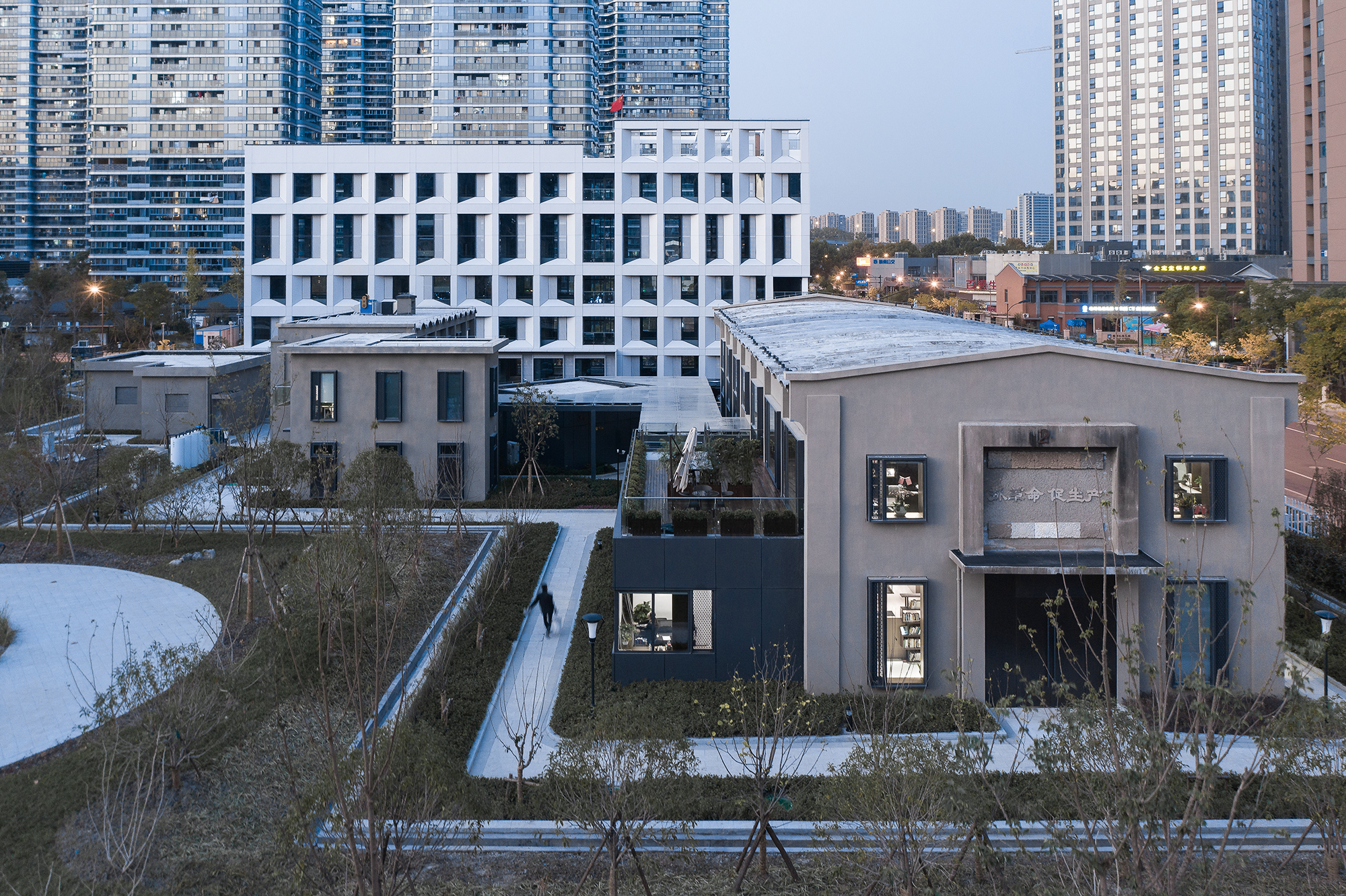
设计单位 零壹城市建筑事务所
项目地点 浙江杭州
项目时间 2020年
建筑面积 5,831平方米
杭州化纤厂旧址改造项目位于杭州市拱墅区蓝孔雀板块,包含杭实工发铭座办公园区和城市公园两部分,其规划、建筑、景观、室内及软装设计由零壹城市一体化完成。
Located in Blue Peacock Block, Gongshu District, Hangzhou, the renovation project’s planning, architecture, landscape, interior and soft decoration are both designed by LYCS Architecture. It contains two parts, the office and the city park.
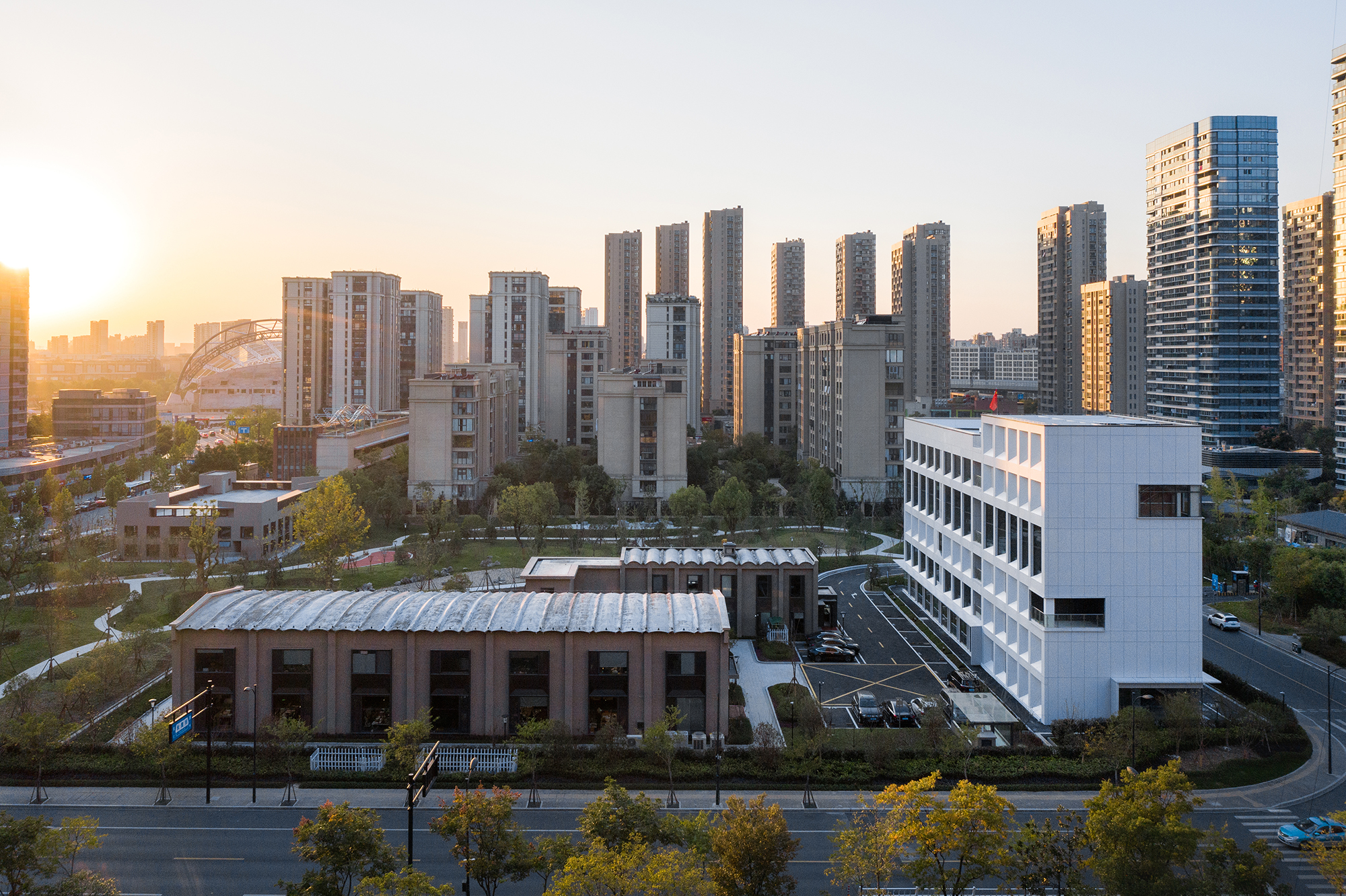
位于京杭大运河最南端的拱墅区是杭州传统工业区,聚集着杭钢、杭锅、蓝孔雀化纤厂等工业企业。蓝孔雀化纤厂是当时全国最大化纤企业之一,产品远销欧亚12个国家和地区。90年代,拱墅区由工业重地向城市生活功能转型。区内的高能耗、高排放企业相继关停转迁,蓝孔雀化纤厂原址逐渐荒废。直到2018年,杭州工发集团携手设计团队启动改造项目,让老厂房迎来了重生的契机。
Gongshu district, located at the southernmost of Beijing-Hangzhou Grand Canal, is a traditional industrial zone of Hangzhou, with industrial enterprises such as Hangzhou steel factory, Hangzhou pot, Blue Peacock chemical fabric factory, etc. Blue Peacock Chemical Fibre Factory was one of the largest fiber enterprises in China at that time. Its products were exported to twelve countries and regions in Eurasia. In the 1990s, Gongshu District transitioned from industrial to urban life function. High-energy and high-emission enterprises in the region had been shut down and transferred one after another, and the original site of the Blue Peacock Chemical Fiber Factory had gradually been abandoned. Until 2018, Hangzhou Industrial Development Group joined hands with LYCS Architecture to launch the renovation project, which ushered in an opportunity to resurreate the old factory.
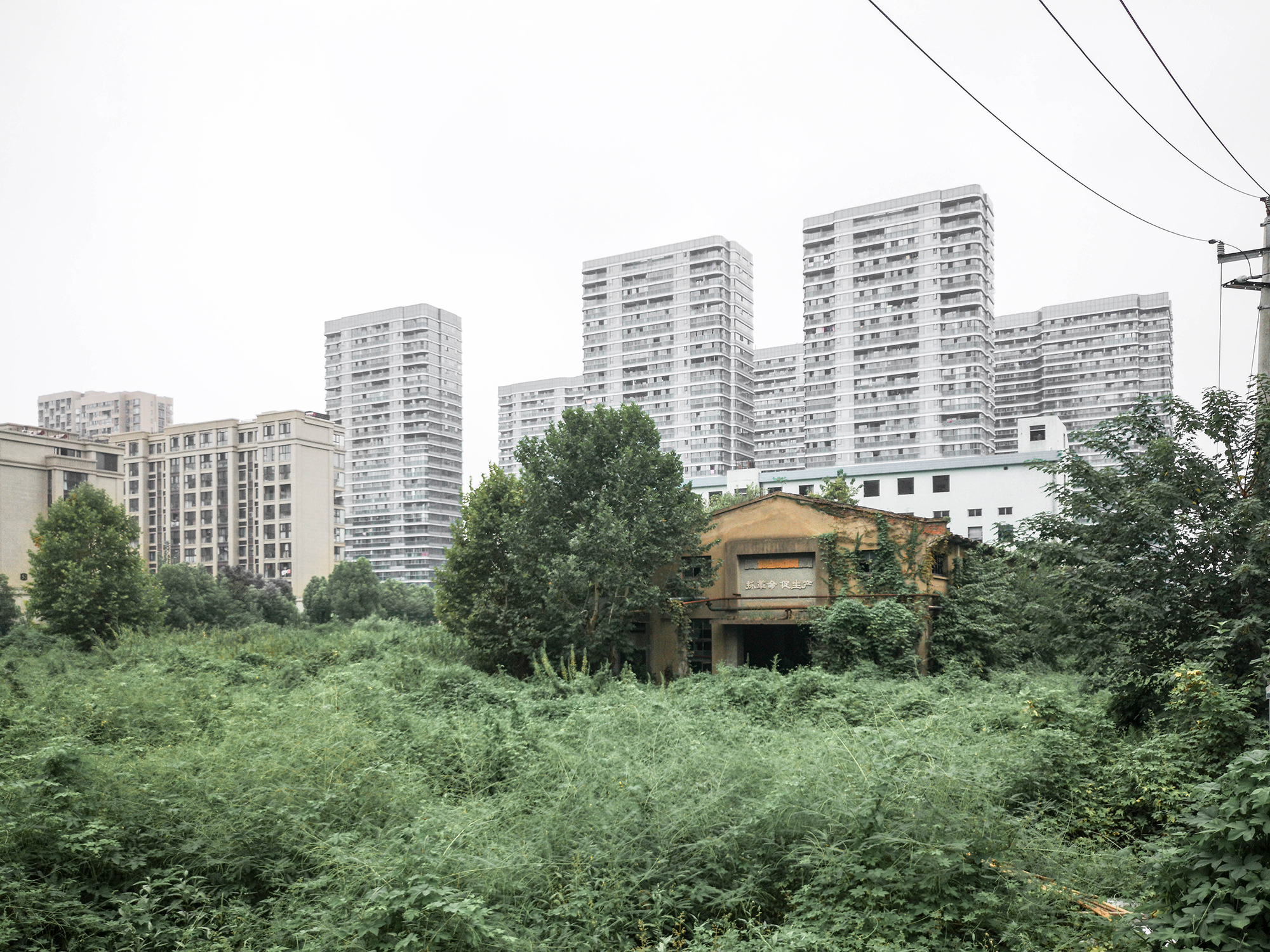
场地内有5栋遗留建筑、4栋厂房、1栋厂区宿舍,均建于上世纪70~90年代,以混凝土框架结构和砖混结构为主,外立面侵蚀严重,门窗大多已严重损毁。但透过斑驳的墙面,锈迹斑斑的窗框和极具年代标志性的屋顶,依然能让人清晰的感受到曾经这片土地上的工业气息。
There were five legacy buildings on the site, including four factories and one factory dormitory, which were built between the 1970s and 1990s. The building structure was mainly concrete frame structure and brick-mixed structure. The external facade was seriously eroded, and most of the doors and windows had been seriously damaged. people can still clearly feel the industrial atmosphere of the land through the mottled walls, rusty window frames and landmark roofs.

遗留建筑经专业机构评估,其中地基基础大部分符合现行国家标准的可靠性要求,予以保留;承重结构略低于现行国家标准的可靠性要求,但经过加固修缮即可符合。围护结构大多受潮严重,已无法满足保温、隔热、防水等基本需求,需拆除重建。
The legacy buildings were assessed by professional institutions and concluded that most of the foundation foundation met the reliability requirements of the existing national standards and was retained; the load-bearing structure was slightly lower than the reliability requirements of the current national standards, but can meet the requirements after reinforcement and repair. Most of the envelopes of the buildings were damp, unable to meet basic needs such as insulation, insulation and waterproofing, and need to be dismantled and rebuilt.
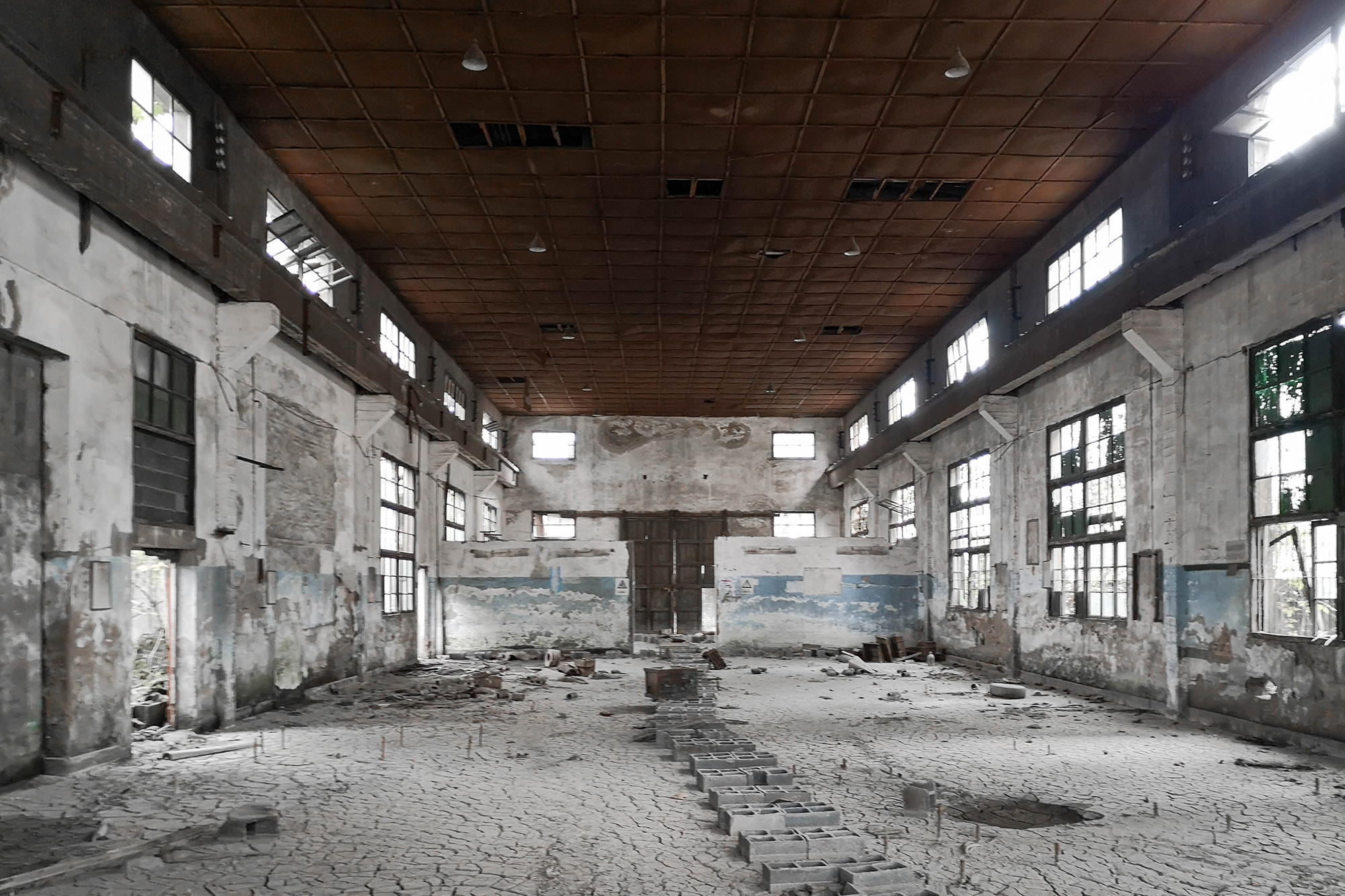
围护结构中,拱形屋顶、老砖和“抓革命,促生产”字样的墙体等要素极具时代标志性,在施工之初,这些保留元素被小心翼翼的从建筑上完整地剥离、保留并做专业处理。
In the enclosure structure, arched roofs, old bricks and walls with the words "catching revolution and promoting production" were very landmark in the era. At the beginning of construction, these reserved elements were carefully peeled, retained and professionally processed from the building.

设计在立面上采用大面积的落地窗来满足室内办公空间对于光线品质的需求。竖向的窗框搭配简约的线条,古铜色的铝板与“修旧如旧”的墙体形成鲜明的对比,在工业遗存的原始粗犷中,点缀了现代办公建筑的精致感。
Large floor windows were designed on the facade to meet the needs of indoor office space for light quality. The vertical window frame was equipped with simple lines. The bronze aluminum plate was in sharp contrast to the "old as old" wall, which embellished the exquisiteness of modern office buildings in the original rough wool left over from industry.
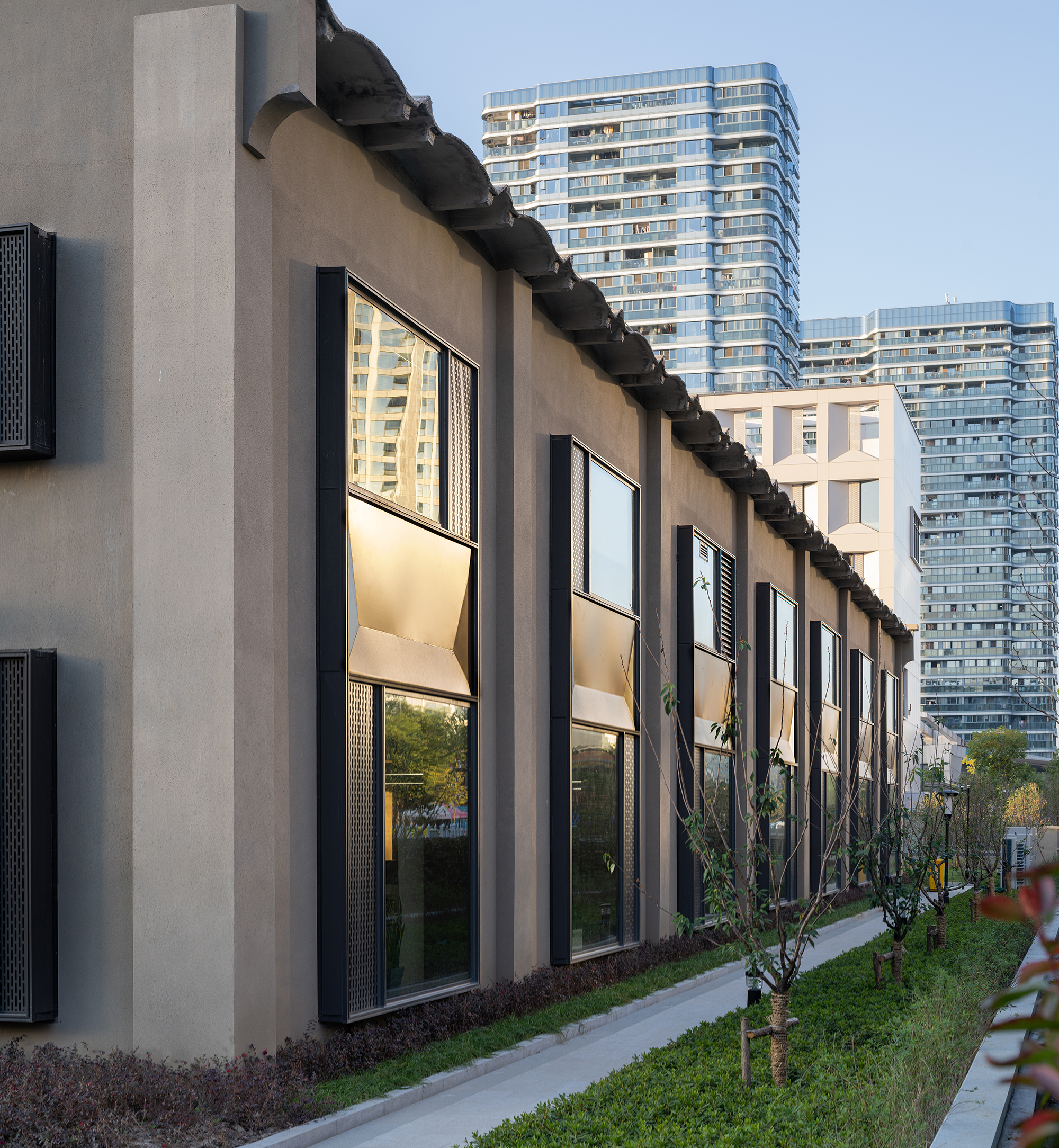
设计将新空间要素置入老建筑,给老厂房注入新的活力。设计在三栋旧厂房之间置入连廊以增强各功能空间的连贯性,满足现代办公的空间要求。连廊的材质与窗框一致,采用深灰色铝板来协调建筑的整体色调。
The design put new spatial elements into the old building to inject new vitality into the old factory. The corridor was placed between the three old factories to enhance the coherence of various functional spaces and met the spatial requirements of modern office. The material of the corridor was consistent with the window frame, and dark gray aluminum plates were used to coordinate the overall tone of the building.
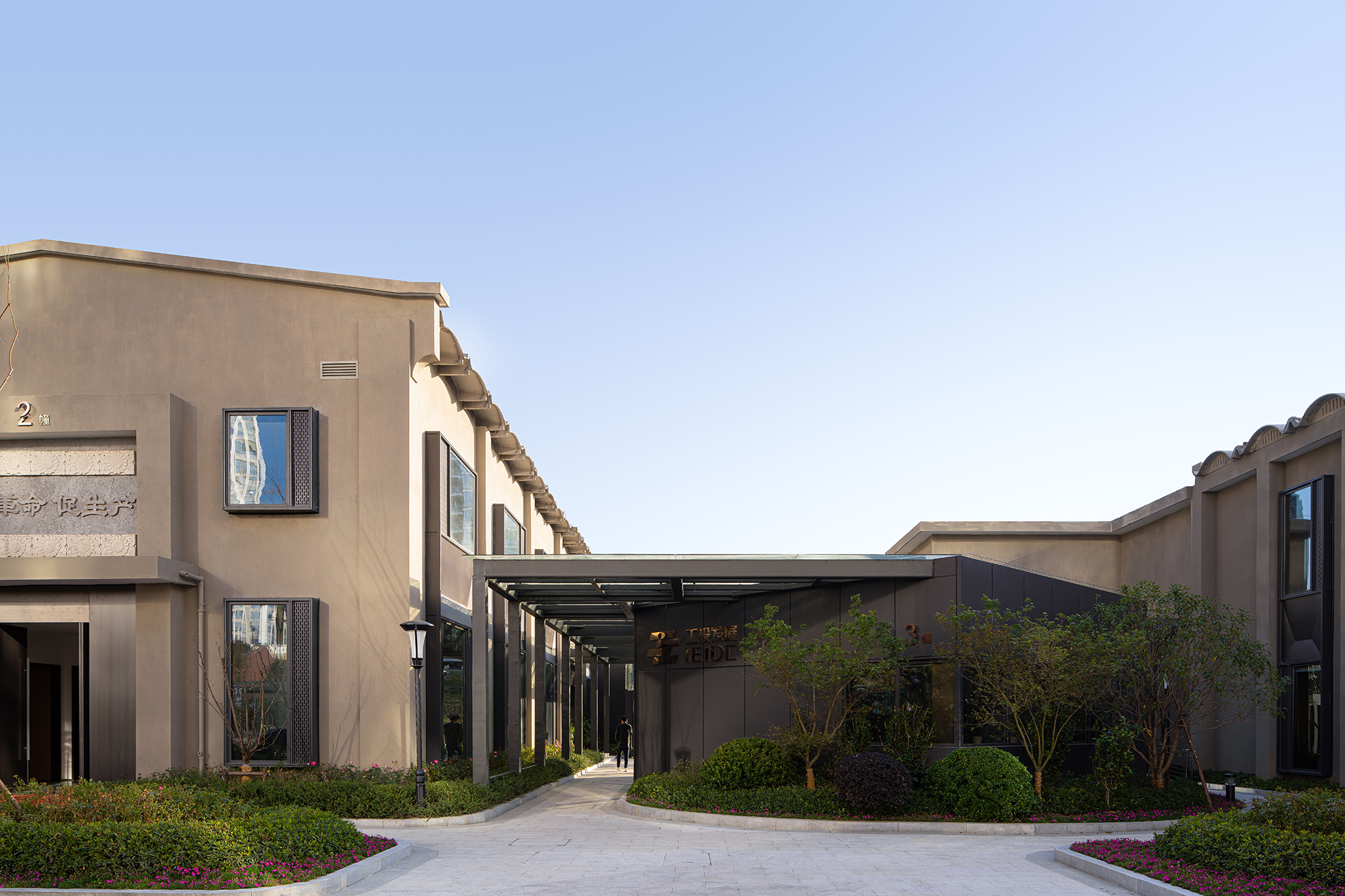
新园区即将以全新的角色融入现代城市,业主和设计师都希望它除了带给人们工业时代的记忆之外,还有更多新生元素能被置入其中,使其需要满足现代化的办公需求,也更好地融入城市。“小白楼”前身为化纤厂的员工宿舍,作为场地与城市的连接载体,而“整旧如新”的设计策略使城市界面的连续性得以实现。设计在保留原始框架结构的基础上,对宿舍立面进行改造。
The new park was about to integrate into the modern city with a new role, the owners and designers hoped that in addition to bringing people the memories of the industrial era, more new elements would be placed in it to meet modern office needs and better integrate into the city. The "Little White Building" used to be the employee dormitory of the chemical fiber factory. As the carrier of the connection between the site and the city, the design strategy of “repair the old as the new” to realize the continuity of the city interface. The design of the facade was modified on the basis of retaining the original frame structure.
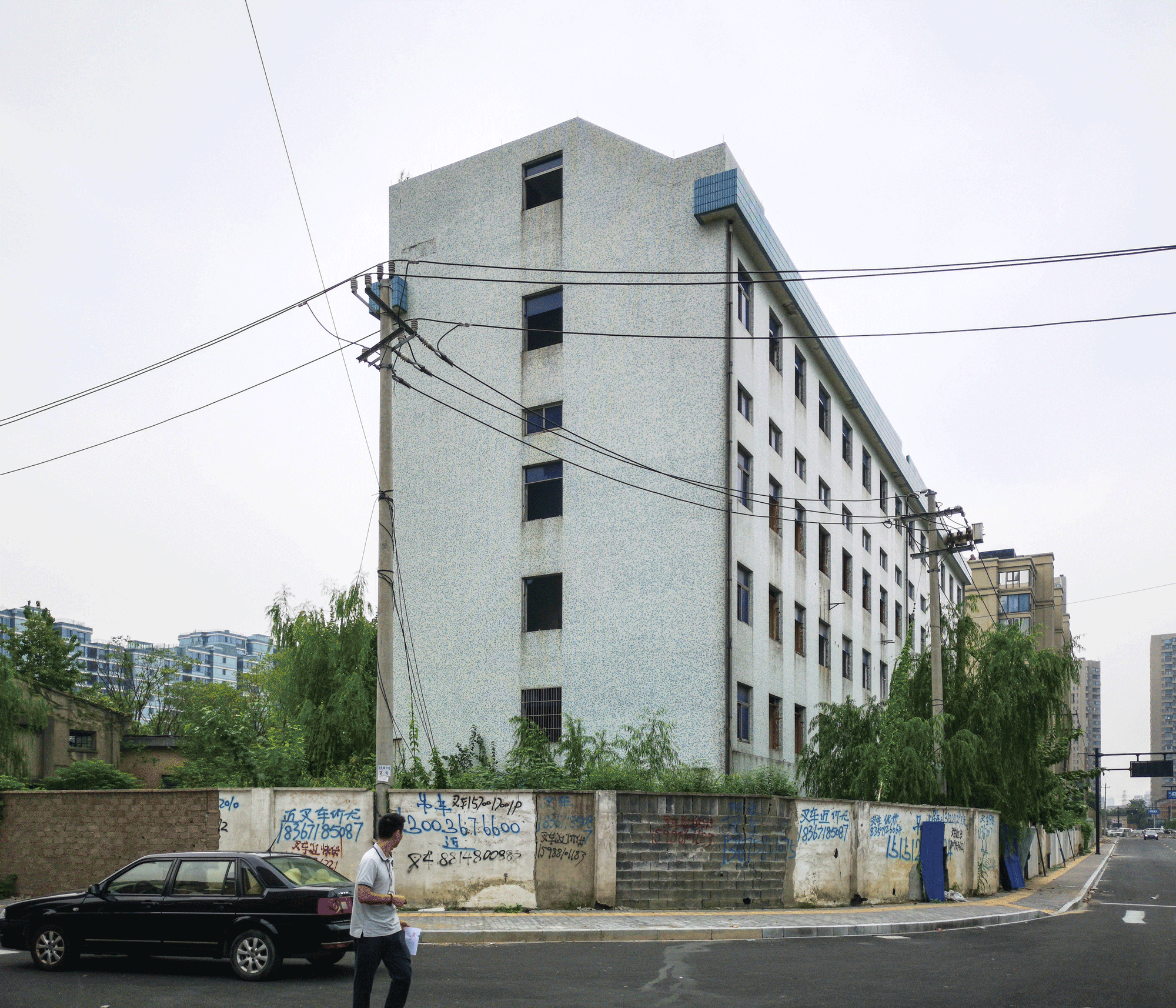
“小白楼”的立面设计尊重原有结构的柱网模数,通过错动的开窗设计,为建筑增加了几分灵动,也在视觉上削弱了原有建筑尺度带来的厚重感。开启扇的隐藏设计使立面的线条简约匀称,呈现的视觉效果更为整洁,在满足办公空间采光通风需求的同时,也提升了建筑的整体质感。
The façade design of the "Small White Building" respected the number of column mesh modulus of the original structure. Through the staggered window opening design, it made the building innervation and visually weakens the heavy sense caused by the original building scale. The hidden design of the open fan makd the lines of the facade simple and symmetrical, and the visual effects presented were cleaner. While meeting the lighting and ventilation needs of office space, it also improved the overall texture of the building.
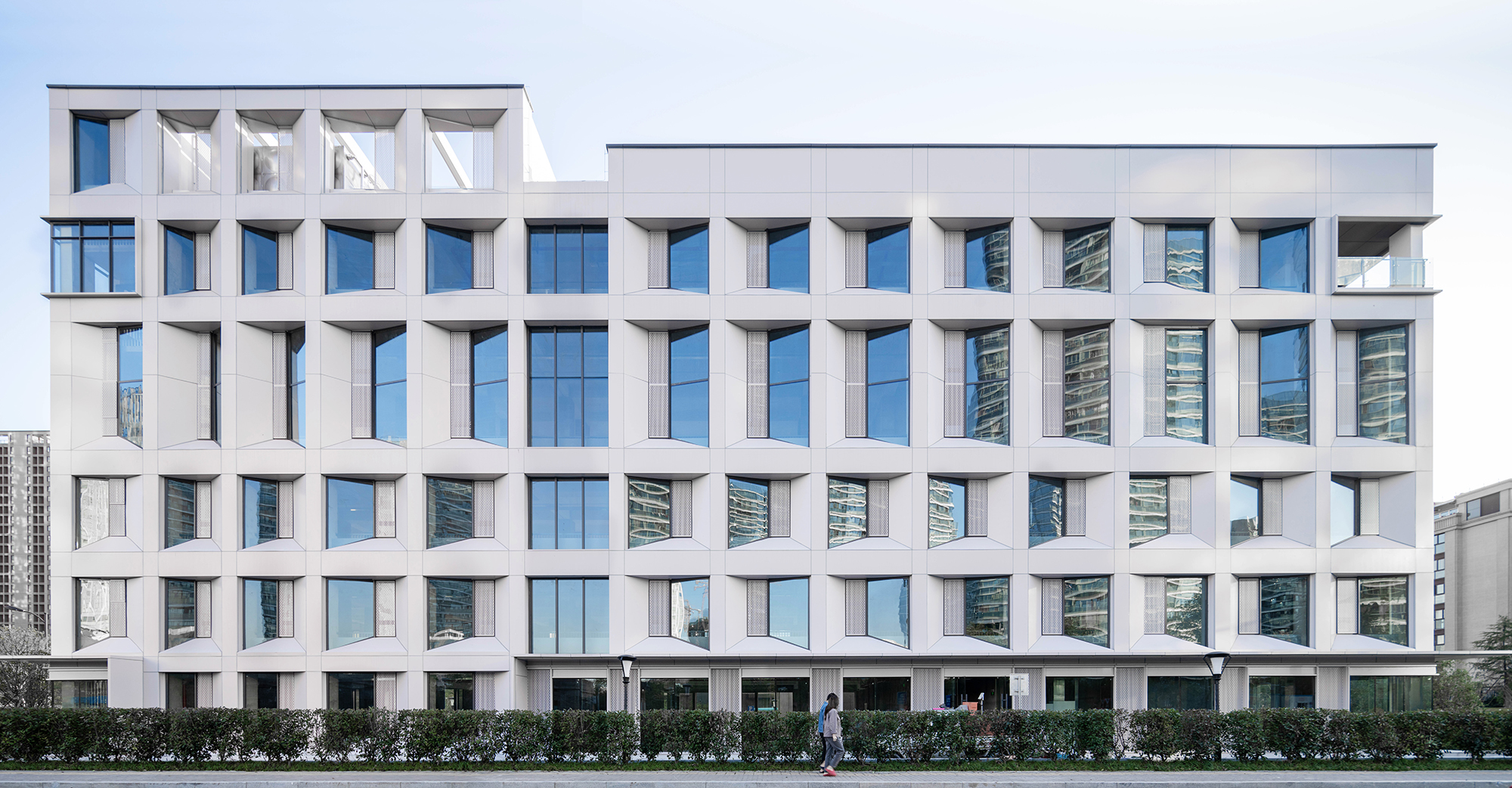
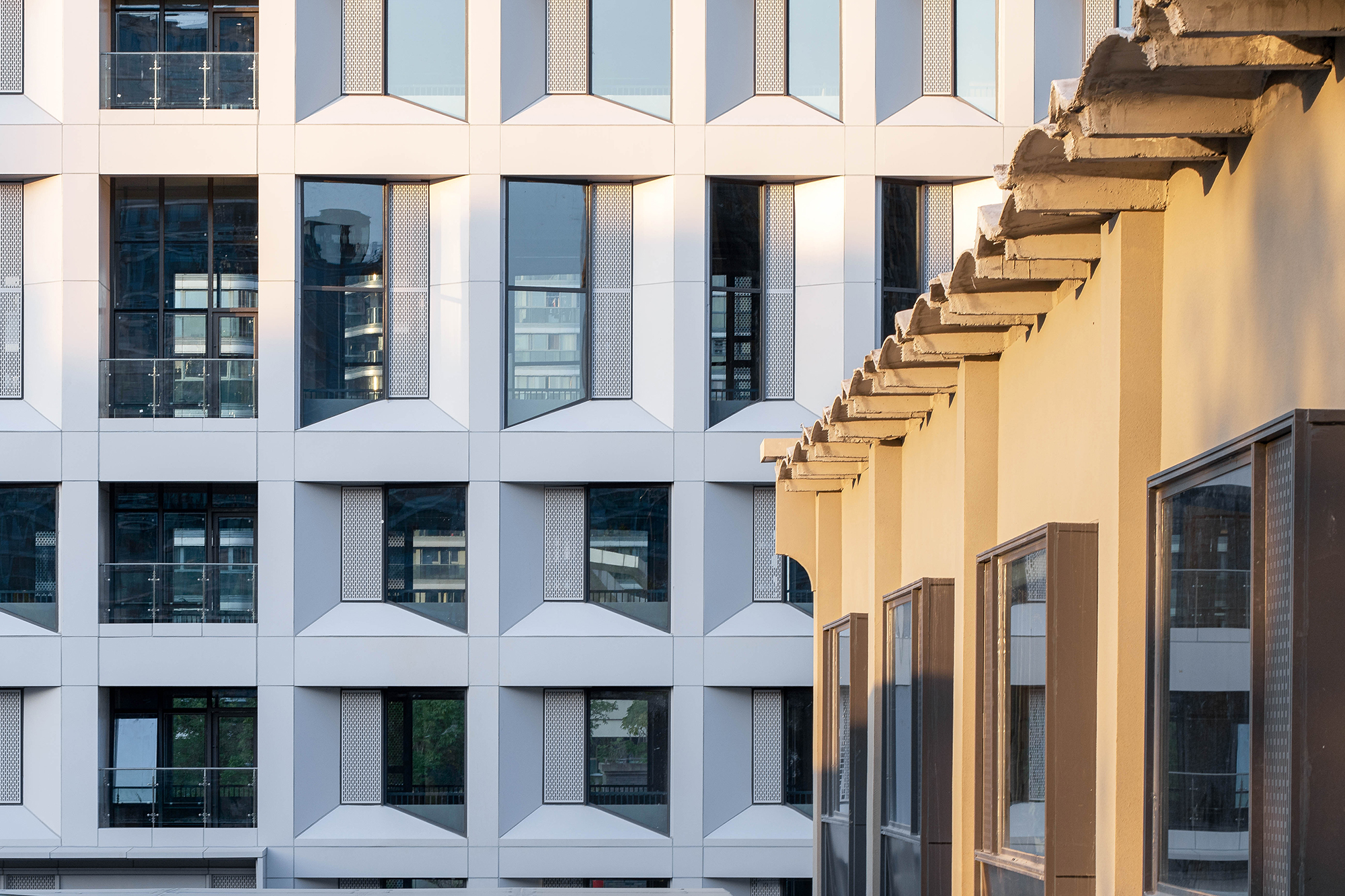
室内空间的设计与建筑设计同步展开,延续建筑“修旧如旧,整旧如新”的设计理念。设计采用一种“box in box”的方法:在原建筑框架结构(大box)内置入独立的各功能空间(小box),将现代化的办公场所置入老厂房。
The design of interior space was synchronized with architectural design, continuing the design concept of building "Repair the Old as the Old, Repair the Old as the New". The design adopted a "box in box" method: internalize independent functional spaces (small boxes) in the original architectural frame structure (large box) and placed modern office spaces into old factories.
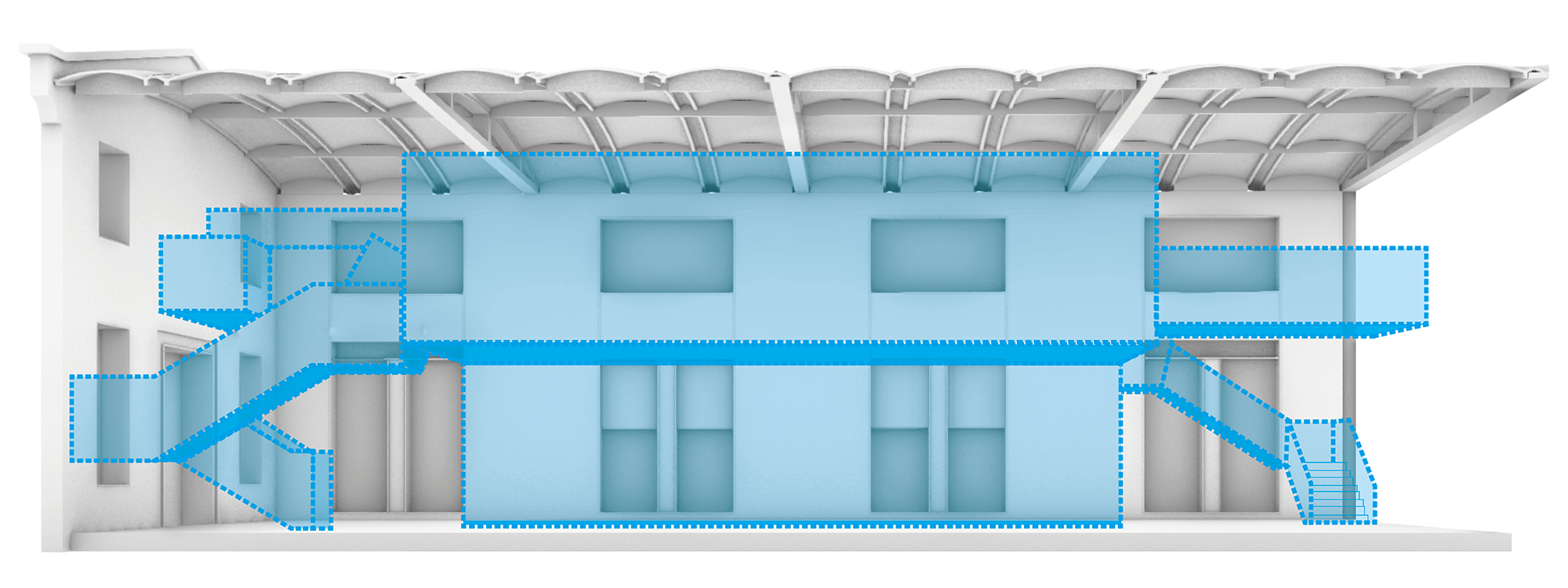
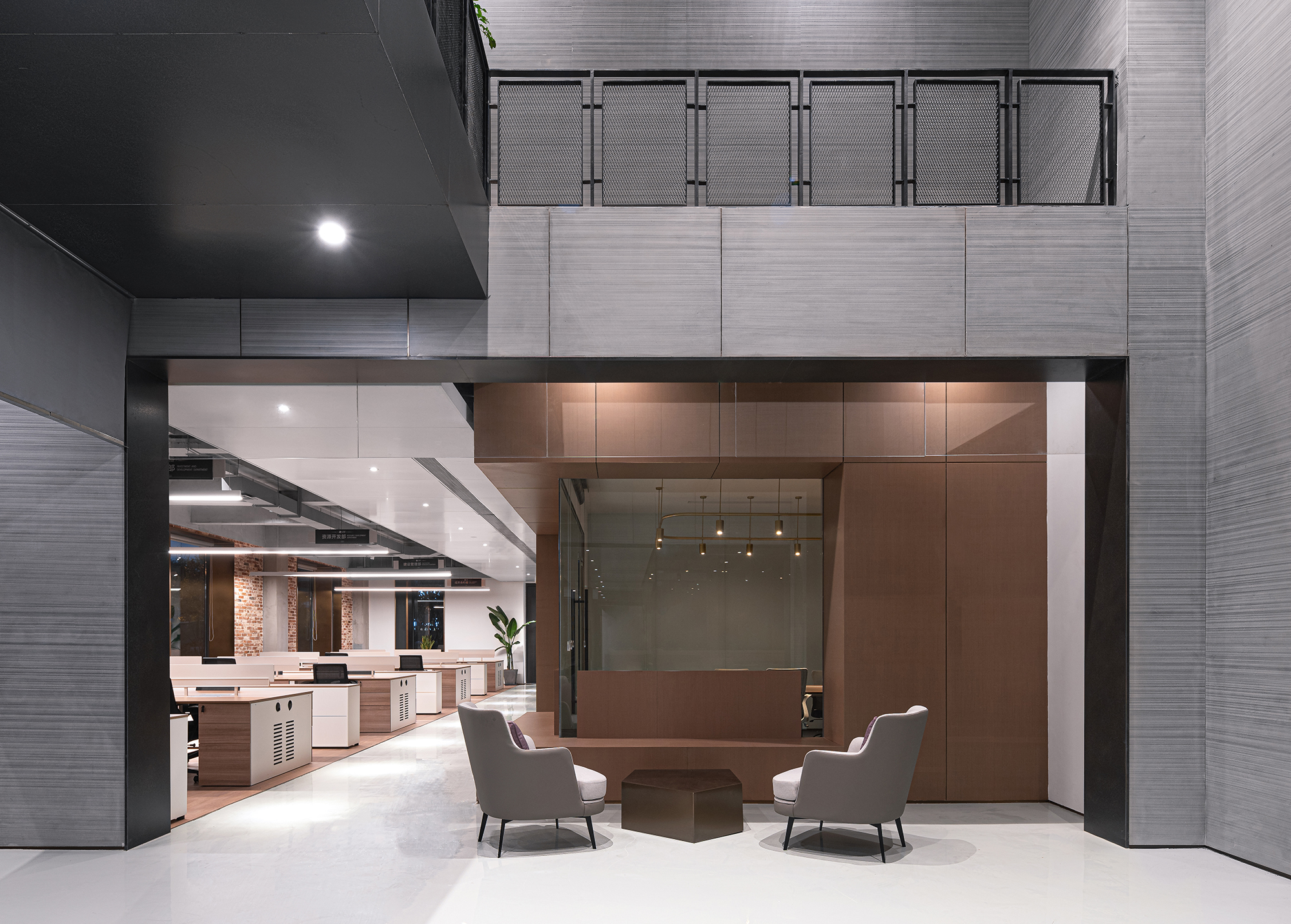
厂房的拱形屋顶安装回原有的位置,室内屋顶的加固材料采用透明玻璃材质,使拱形屋顶在室内能如同“历史遗迹标本”般存在。
The arched roof of the old factory was designed to be installed back in its original position. The reinforced material of the indoor roof was made of transparent glass, so that the arched roofs exist indoors like "historic relics samples".

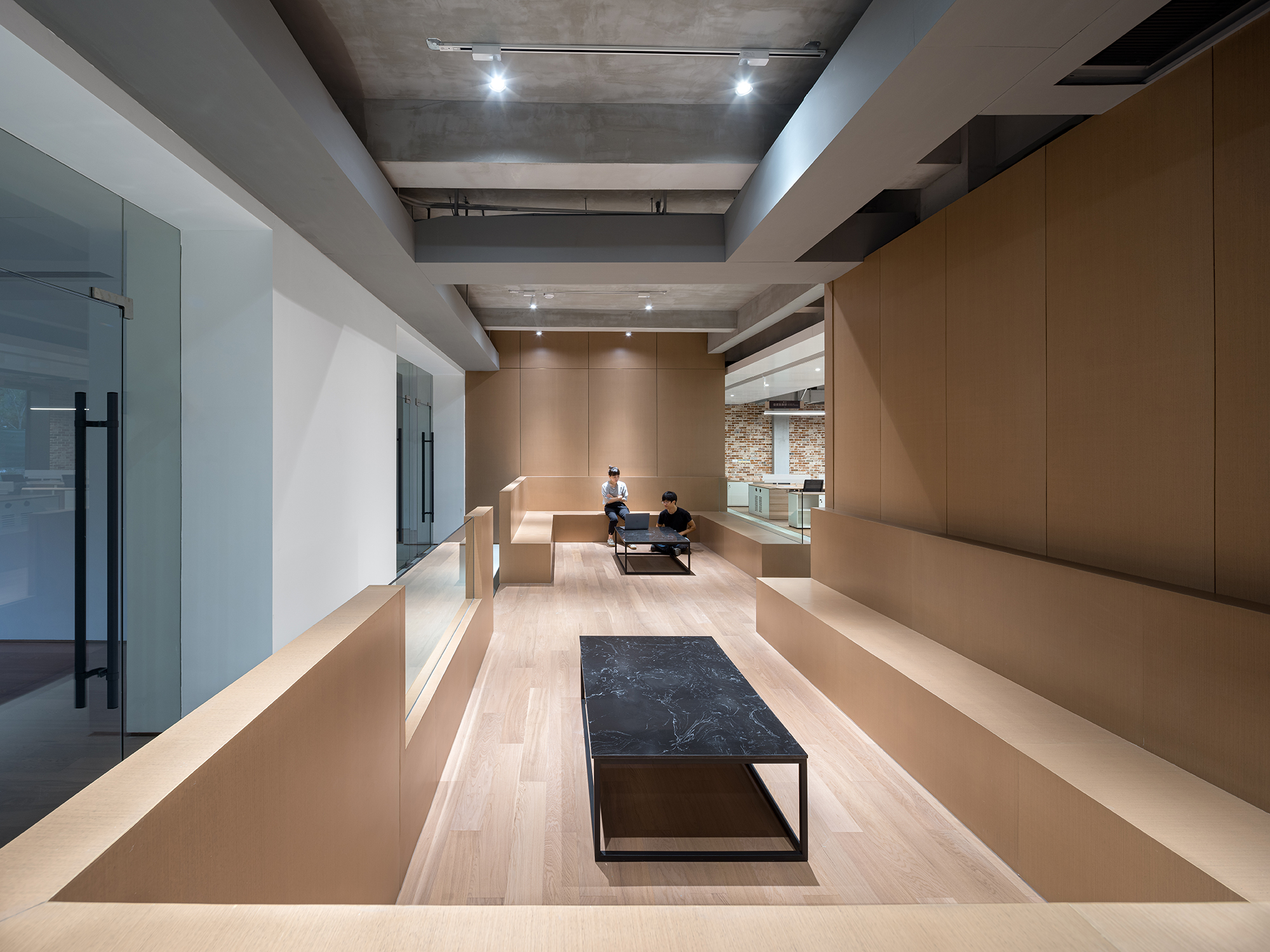
开敞办公区作为“box”之一,其混凝土结构完全裸露,和保留的老红砖形成独特的界面韵律。与之相邻的另一个空间则由木饰面、仿铜不锈钢等现代材料组合而成。通过新旧材料的强烈对比来自然划分办公和休闲空间,营造同一空间内的跨时空体验。
As one of the box, the concrete structure of the office was completely exposed, and the retained old red brick forms a unique interface rhythm. Another adjacent space was composed of modern materials such as wood finish and copper-like stainless steel. Naturally divide office and leisure space through the strong contrast between new and old materials, and created a cross-time and space experience in the same space.

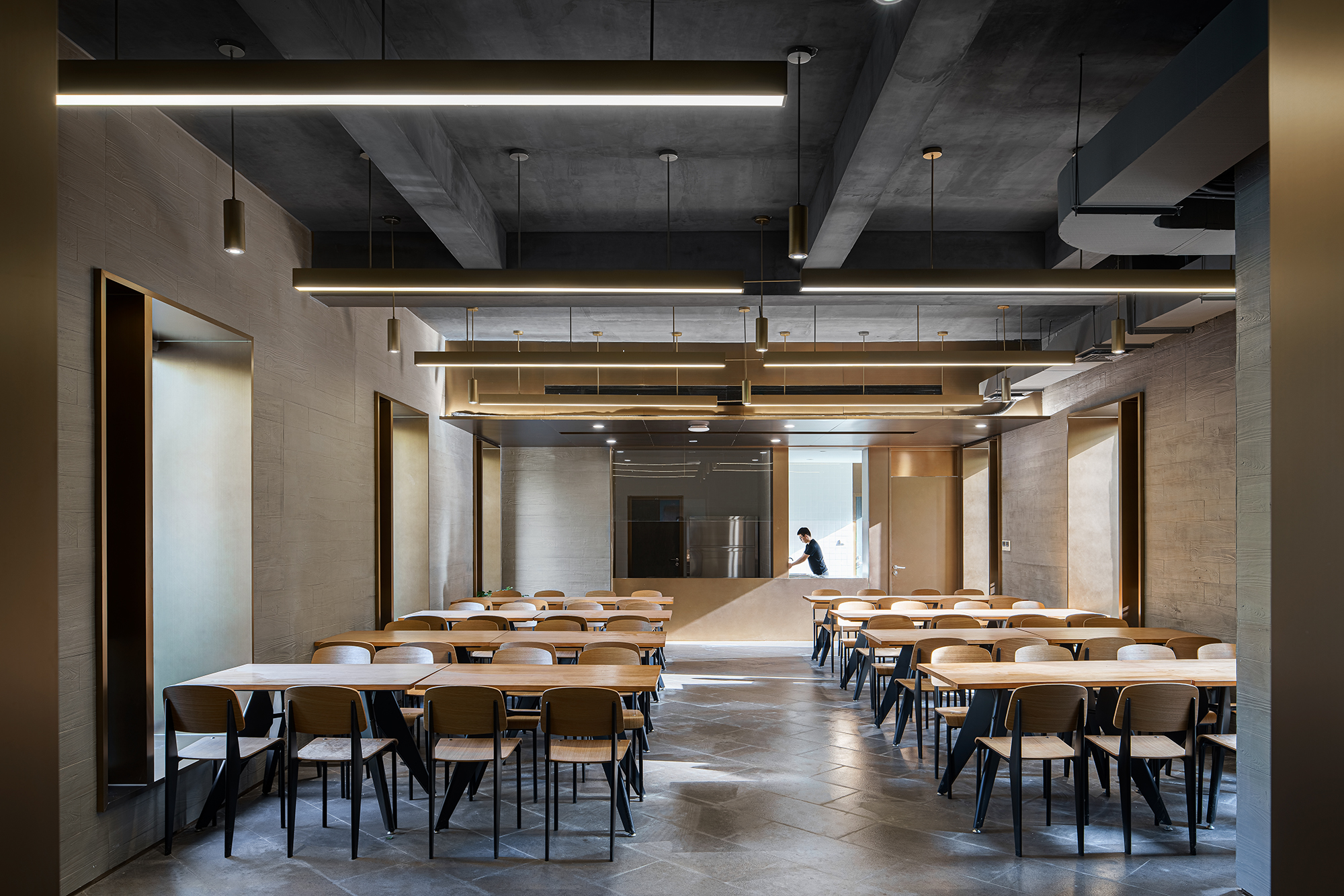
画龙需点睛,“抓革命,促生产”的标语复位,保存下来的厂房老砖回归,原厂房的拱形混凝土屋面板被重新装回屋顶,在耗时两年的设计施工之后,蓝孔雀工业遗存公园已正式重新投入使用。跨越50年时空,历史印迹和现代生活交织在一起,以崭新的姿态回馈社区,融入城市。
The slogan of "catching revolution and promoting production" needed to be repositioned. The preserved old bricks of the factory had returned. The arched concrete roof of the original factory had been reloaded back to the roof. After two years of design and construction, the Blue Peacock Industrial Survival Park has been officially reopened. Beyond 50 years of time and space, historical imprints and modern life are intertwined. Blue Peacock Park gives back to the community in a brand-new way and integrates into the city.
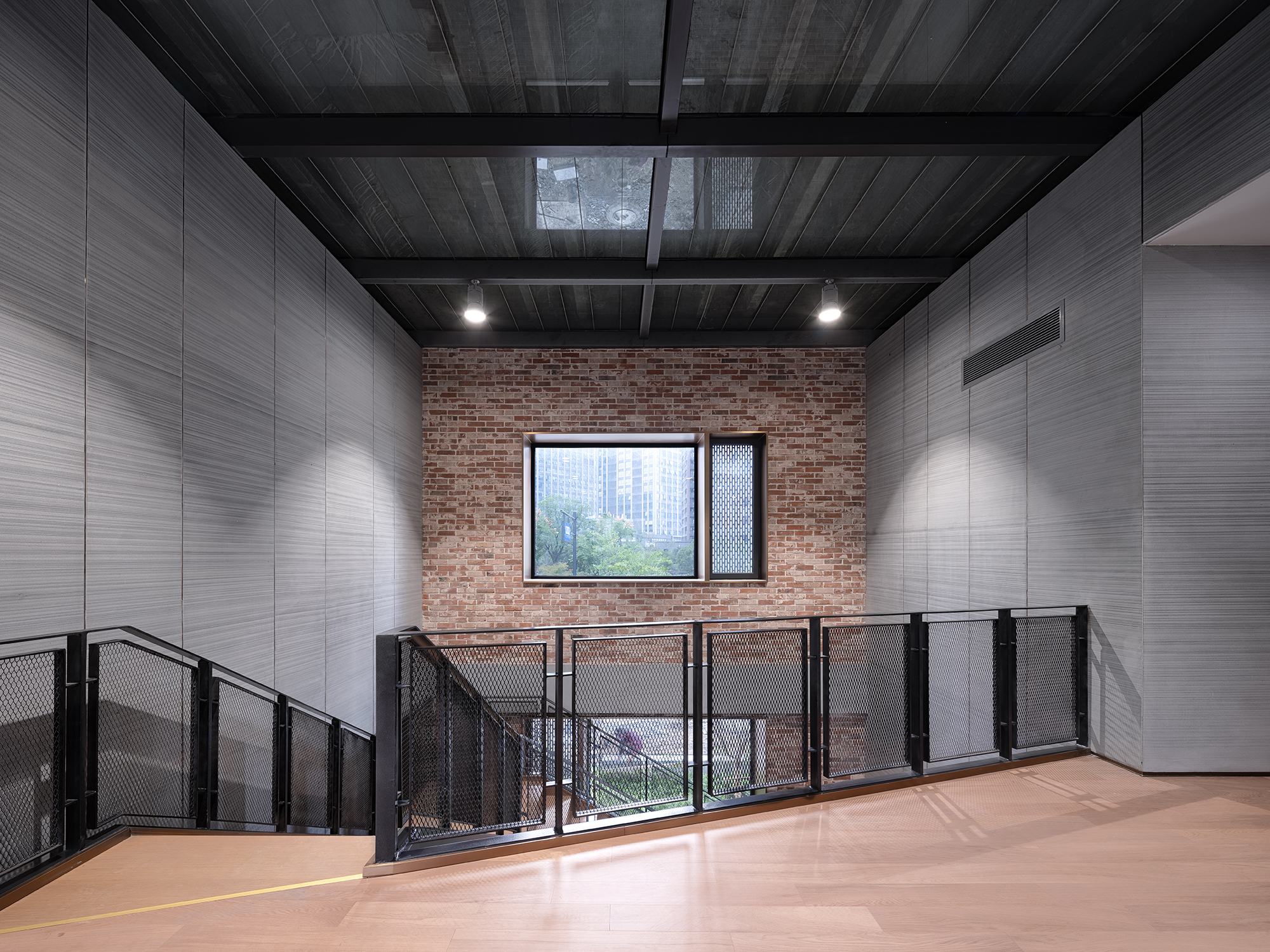

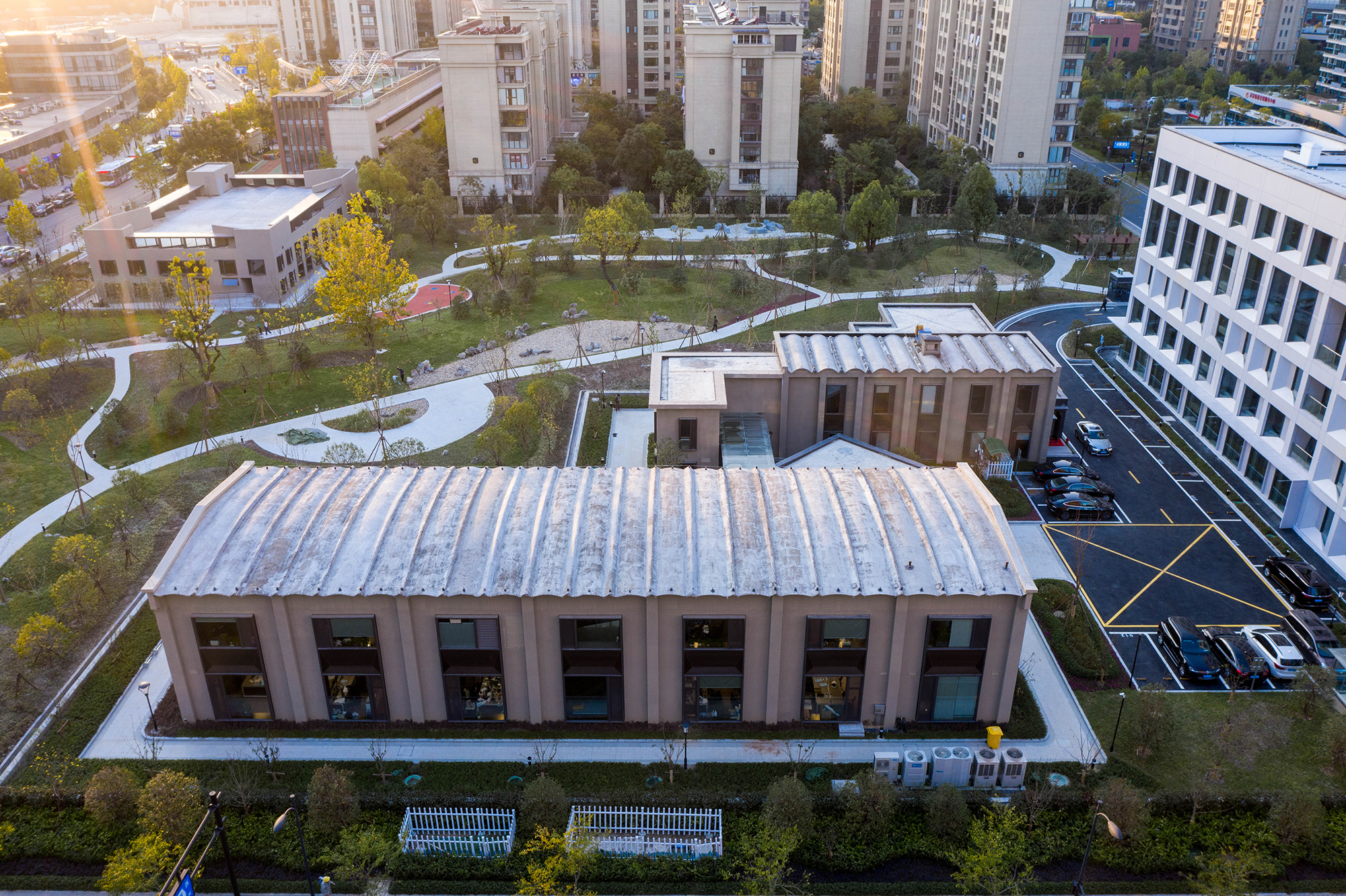
完整项目信息
项目名称:蓝孔雀化纤厂旧址改造
项目业主:杭州工发文化创意有限公司
项目地点:浙江杭州
建筑面积:5,831平方米
项目时间:2018年—2020年
设计内容:建筑、室内、景观、软装
设计公司:零壹城市建筑事务所
设计团队:阮昊、陈文彬、唐慧萍、张磊、张秋艳、沈双双、劳哲东、马广宇、邓皓、辛歆 、王一如
合作公司:天尚设计集团有限公司
摄影:吴清山
版权声明:本文由零壹城市建筑事务所授权发布。欢迎转发,禁止以有方编辑版本转载。
投稿邮箱:media@archiposition.com
上一篇:五里春秋泛文化艺术中心
下一篇:Y-Loft City住宅:白色律动 / 叠术建筑